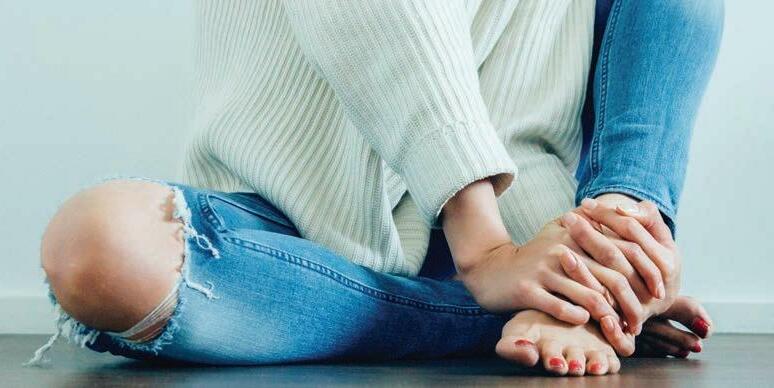
7 minute read
Health & Science

Coursing through your veins every second of every day are tiny variations that categorise your blood into one of these groups: A+, A-, B+, B-, O-, O+, AB+ and AB-. Unless you’ve donated blood, were given a transfusion or found out during pregnancy, maybe you’ve never thought twice about your blood type and what it means for your health.
Advertisement
Research into blood type suggests it may matter more than we give it credit for — at least when assessing risk for certain health conditions, especially heart disease. ese invisible di erences in the blood may give some people an edge at staving o cardiovascular problems, and may leave others more susceptible.
What does blood type mean, and how are they di erent? e letters A, B and O represent various forms of the ABO gene, which programme our blood cells di erently to form the di erent blood groups. If you have type AB blood, for example, your body is programmed to produce A and B antigens on red blood cells. A person with type O blood doesn’t produce any antigens.
Blood is said to be ‘positive’ or ‘negative’ based on whether there are proteins on the red blood cells. If your blood has proteins, you’re Rhesus, or Rh, positive.
People with type O- blood are considered ‘universal donors’ because their blood doesn’t have any antigens or proteins, meaning anybody’s body will be able to accept it in an emergency.
But why are there di erent blood types? Researchers don’t fully know, but factors such as where someone’s ancestors are from and past infections which spurred protective mutations in the blood may have contributed to


Why your blood type may make a difference to a healthy heart
the diversity, according to hematologists. People with type O blood may get sicker with cholera, for example, while people with type A or B blood may be more likely to experience blood clotting issues. While our blood can’t keep up with the di erent biological or viral threats going around in real time, it may re ect what’s happened in the past.
People with type A, type B or type AB blood are more likely than people with type O to have a heart attack or experience heart failure, according to the American Heart Association.
While the increased risk is small (types A or B had a combined 8% higher risk of heart attack and 10% increased risk of heart failure, according to one large study) the di erence in blood clotting rates is much higher, per the AHA. People in the same study with type A and B blood were 51% more likely to develop deep vein thrombosis and 47% more likely to develop a pulmonary embolism, which are severe blood clotting disorders which can also increase the risk of heart failure.
A reason for this increased risk might have to do with in ammation that happens in the bodies of people with type A, type B or type AB blood. e proteins present in type A and type B blood may cause more ‘blockage’ or ‘thickening’ in the veins and arteries, leading to an increased risk of clotting and heart disease. is may describe the anecdotal (but currently inconclusive) decrease in risk of severe Covid-19 disease in people with type O blood, which has inspired research. Severe Covid often causes heart problems, blood clotting and other cardiovascular issues.
People with type O blood enjoy a slightly lower risk of heart disease and blood clotting, but they may be more susceptible to bleeding disorders. is may be especially true after childbirth, according to a study on postpartum blood loss, which found an increased risk in women with type O blood.
People with type O blood may also fare worse after a traumatic injury due to increased blood loss, according to a study published in the journal Critical Care.
Other research has found people with type AB blood might be at an increased risk for cognitive impairment when compared to people with type O. Cognitive impairment includes things like trouble remembering, focusing or making decisions.
While research available now shows that blood type can tip the scale in terms of someone’s risk of developing heart disease, big factors such as diet, exercise or even the level of pollution you’re exposed to in your community are the major players in determining heart health.
To keep your heart healthy, there’s no special recommendation other than a good heart-healthy diet that lowers in ammation, regardless of someone’s blood type.
Lean proteins, healthy fats, fruits, vegetables and whole grains are all part of a hearthealthy diet.
But future research could o er more de nitive ways doctors treat patients based on their blood type. All factors considered equally, a patient with healthy cholesterol levels and type A blood may bene t from taking aspirin each day whereas it might not be necessary for a person in the same boat with type O blood.
How sitting on the floor can help you age well
Back in 2014 research in the European Journal of Preventive Cardiology found that the ability to get up from the oor is a signi cant predictor of longevity in people ages 51 to 80.
In the study, those who had the hardest time with the task were ve to six times more likely to die during the researchers’ follow-up period than those who could sit and stand with ease. While the study is on the older side, more recent research, including a May 2020 study in the same journal, backs up the link. at’s because how well you can move from standing to sitting and vice versa is a re ection of your overall health, tness and function, says Gbolahan Okubadejo, MD, a New York City-based spinal and orthopedic surgeon.
Having more and more trouble getting down onto and up o of the oor? Here’s the silver lining: Sitting on the oor is also a simple, e ective way to maintain strength, function and vitality as you age.
Fortunately, you don’t need to shun the chair for every activity. But spending some time on the oor each day can bene t your health. Here, are the pluses of plopping down on the ground. co-ordination. So, the more you do it, the better your balance will be. is is especially important as you get older because it help reduce your risk for falls and resulting fractures. shoulders, elbows, wrists, hips, knees and feet, Dr Okubadejo says. us, a daily practice of sitting on the oor can help improve your mobility. at refers to your ability to move through your joints’ full range of motion, which is critical to being able to move through life like you want to. It can also help you stay injury- and pain-free as you age.
3. A Strong Core and Legs
Sitting on the oor can help you build a sturdier core and legs. Here’s why: “ e core must be engaged when pulling the body up from the ground, so getting up and sitting back down multiple times can lead to maximal core engagement,” Dr Okubadejo explains.
Plus, “rising from the oor forces people to perform a similar motion to a squat,” he says. So, when you regularly sit on the ground, you’re essentially doing several repeats of the lower-body exercise throughout the day.

4. Healthier Posture
Sitting on the oor can help promote good posture. at’s because when you move from a standing position to seated (and back again) your joints must be aligned to maintain balance. Proper body alignment relates to how your head, shoulders, spine, hips, knees and ankles stack up with each other.
What’s more, oor sitting encourages you to sit more upright instead of hunching your back — another factor for healthy ageing. (Many of us sit too often and in less- than-ideal chairs, which doesn’t bode well for posture.)
Finally, while sitting on the oor can support good health as you age, you have to do it correctly to reap the full bene ts.
Avoid slouching. When your back is in a curved position, it can put extra strain on your spinal discs and vertebrae, he says. Instead, sit with your torso tall and straight. Gently squeeze your shoulder blades down and together.
Sit on a small pillow or towel. is can ease any tailbone discomfort, he says. Plus, it can also place your pelvis in better alignment with your spine.
Move your legs. Any position can become a problem when you hang out in it too long. Try sitting cross-legged, with your legs straight out in front of you or with your knees bent and feet at on the ground.









